Decorating With Plantshow Often Do You Water Indoor Plants
Do your kids simply love watering indoor plants? You might be encouraging the habit as you see no harm in it. However, plants have their own needs. They require light, water and nutrition to survive. Now, the easiest way to meet their lighting requirements is to take them on a weekly vacation to your balcony and leave them to sun themselves for a couple of hours. And LazyGardener might help with their nutritional requirements as well. But what about watering them right? We came across this video to help you out.
https://www.youtube.com/watch?v=TNISO1piMUQ&t=1630s
However, that's not all. From choosing the right pot to your watering schedule, everything makes a difference to the life of your plant. So how do you know the correct way to water your plants? Read on!
First, you need to choose the right pots for your indoor plants

If you were about to pick up a cutesy pot from the neighbourhood shop to show off your latest indoor plant, stop! Did you know that the type of pot you choose makes a difference to the health of your plant?
- Closed ceramic pots are a no-no. Also, steer clear of terrariums for your succulents.
- Terracotta and unglazed pots are a good choice for indoor plants since they are porous and allow roots to breathe.
- Opt for pots with plenty of drainage holes at the bottom. These will let the excess water flow out and prevent too much moisture from spoiling the roots.
You can also make your own plant pots with everyday items at home.
When do plants need water?
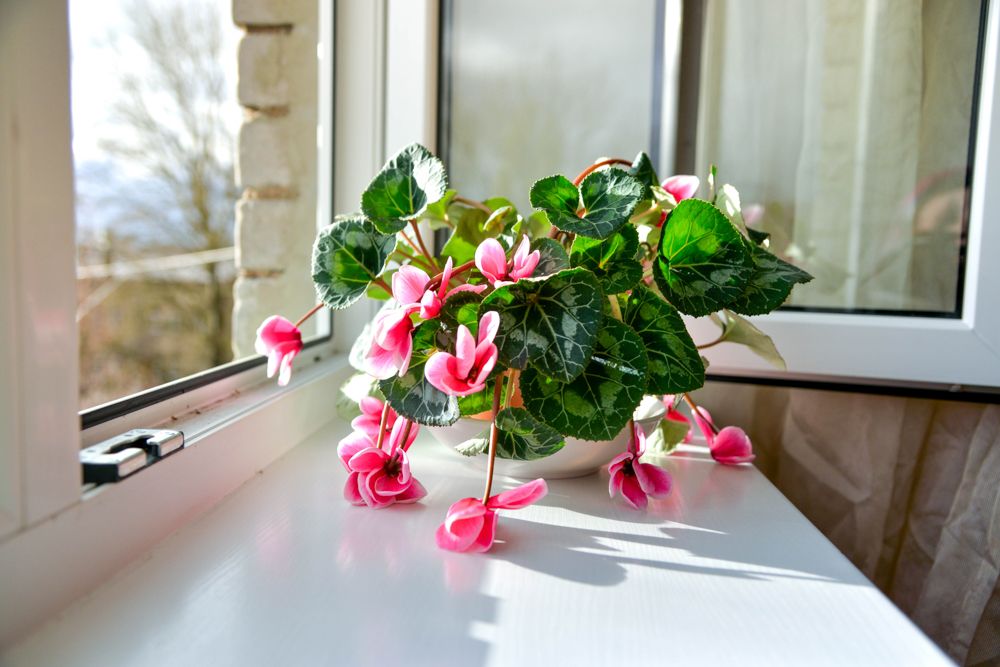
Check the soil. Put your finger into the soil on your pot. Do not stop at the surface, but delve about an inch deeper. If the soil sticks to your hands, the soil has enough moisture to sustain your plant. However, if no soil sticks to your hand, it's time for watering indoor plants!
How often should you water your plants?
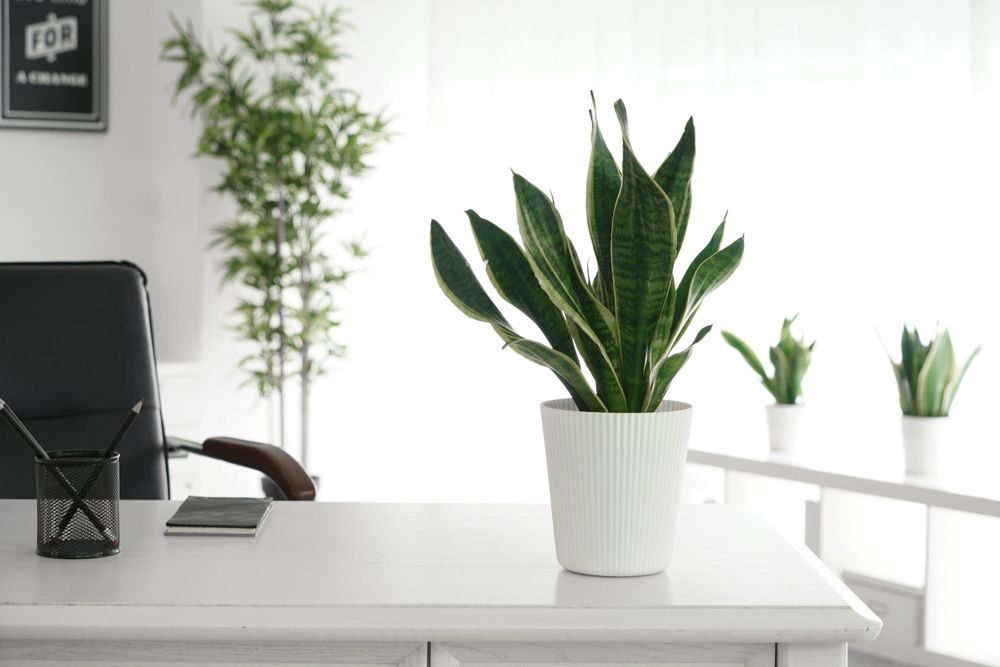
If you water plants on a daily or weekly basis, you might be in for a shock! Not every plant needs water at the same intervals. Moreover, the timeline of watering indoor plants can vary due to multiple factors. This includes the plant's water requirements, size of the pot, the climate, and even where the pot is placed.
For example, plants need to be watered more frequently in summer than in winter. Similarly, a plant in direct sunlight will lose more water to evaporation and transpiration, so it needs to be watered more often.
Here are a few tips to help you know when and how to water plants:
- Do away with watering schedules. Your indoor plants need water on their timelines, not yours!
- Instead of watering a little everyday, opt for a more thorough watering at intervals. The water needs to trickle below the surface and reach the end of the pot.
- If you have a larger pot, ensure that you water it thoroughly such that the water flows all the way to the bottom. This ensures better root development.

How to water your plants?
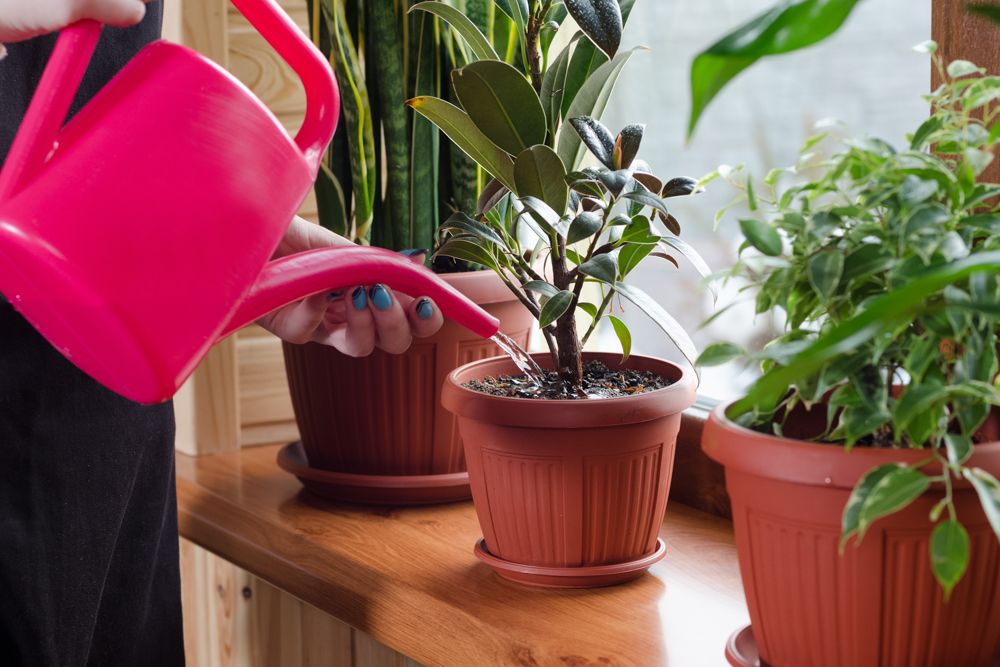
You can safely water your plants until it drips out of the pot. Ensure that the soil in your pot is well-drained so that water can flow freely and the roots can breathe. And if you do not want water dripping out of the pot and onto the ground, simply place a saucer underneath it to allow excess water to flow out without making a mess!
How do you prevent overwatering and underwatering?
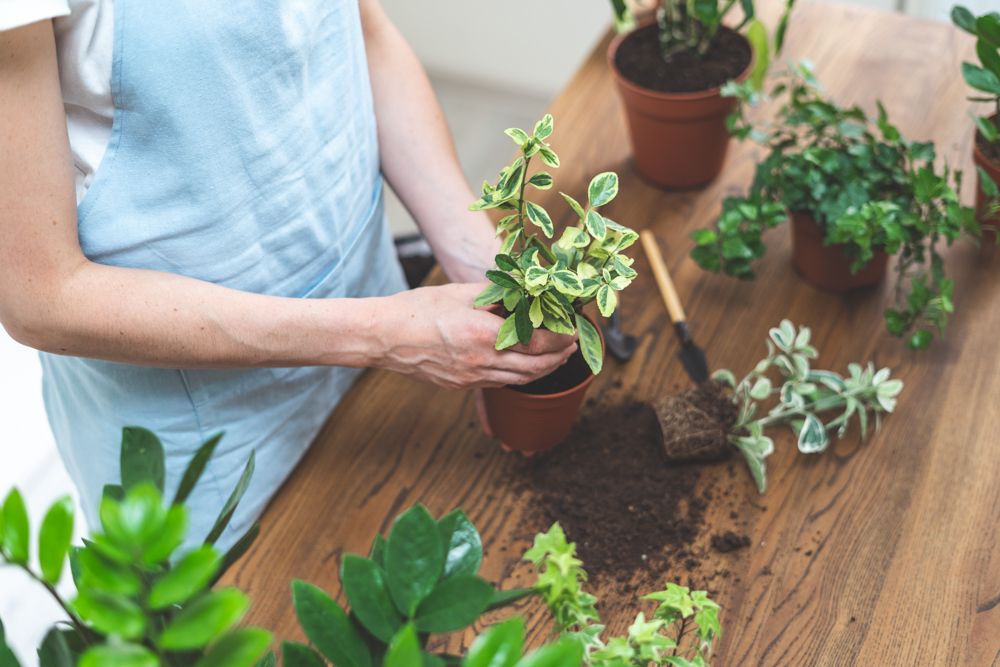
Both overwatering and underwatering can have adverse effects on plants. However, if the leaves of your plants are turning brown, it could be caused by either of these conditions. So how do you find out?
In case of underwatering: The tips of your leaves will turn brown and the leaves will start looking dry and dull. However, experts suggest that underwatering is easy to fix—simply water the plant more, and at reduced frequencies until it recovers.
In case of overwatering: If the browning extends from the tips to halfway into the leaves, or the sides of your leaves are turning brown, you have most likely over watered the plant. In this situation, the leaves remain fleshy but they turn brown. It's a common issue for indoor plants, however, it can be harder to fix. If you have identified the situation in the very beginning, simply withhold water for a week to see if it makes a difference. If the damage is extensive (browning of multiple leaves and part of the stem), repotting the plant might be your only hope.
Bonus Tip: Should you water the leaves of your plant?
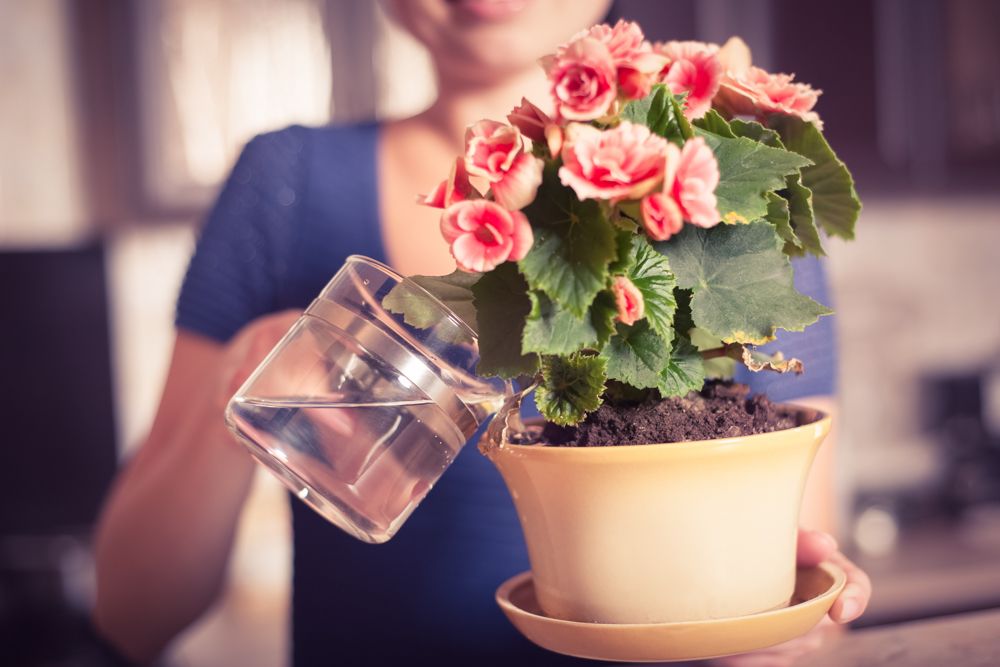
While watering plants, exercise caution! Pour the water directly into the soil, away from the leaves. It might be easiest to simply pour water over the leaves, but this can damage your plant.
If you have succulents with all the leaves sprouting from a single point, watering the leaves can be detrimental to plant growth. Why, you ask? This is because water can collect at the node instead of trickling down into the soil. And over time, this can cause your carefully nurtured plants to rot. We'd suggest using a watering pot with a long, narrow spout that helps you water your plants close to the soil easily.
If you tend to pour water over the leaves of plants because they were looking dusty, stop! You can wipe the leaves off with a tissue instead, to keep them clean. Alternatively, you can mist the leaves. However, do not pour too much water over these leaves.
Has this article got you thinking where to place your plants for best growth? Here's a roomwise guide!
Send in your thoughts and suggestions to editor@livspace.com.

Decorating With Plantshow Often Do You Water Indoor Plants
Source: https://www.livspace.com/in/magazine/watering-indoor-plants